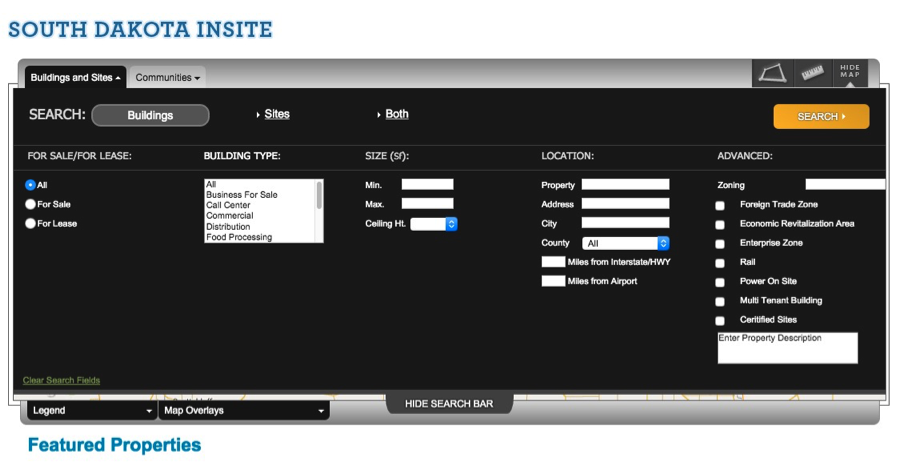Are you RFI-ready?
September 2, 2015An RFI is a formal “Request for Information” from a site selection consultant or company searching for a new location for the expansion of operations. The South Dakota Governor’s Office of Economic Development (GOED) periodically sends out RFIs to local economic development partners statewide as a result of a specific company inquiry. The RFI process is crucial in attracting a business to the region, but the time-frame allotted for responding to them is becoming shorter. Busy community officials may find collecting data in a few short hours troublesome, but the data you provide impacts big decision making. To help make your RFI response process more smooth and effective, GOED and Heartland offer the following tips:
#1 – Be Prepared
The types of information typically requested in an RFI include available properties, labor force, incentives, transportation (proximity to major highways, airports and rail) and utilities (sewer, water, electric, natural gas and telecommunications). Having the five key categories of information on hand and up-to-date can ensure a quick and easy response to an RFI.
Another time-saver? Keep a template of your RFI response for multiple uses and fast editing.
#2 – Read carefully
RFIs are often delivered via email from a GOED business development representative and include an attachment – the RFI Community Checklist – which details the company requirements and the data responsibilities of the community and state. Before you put a response together, make sure you meet the RFI’s basic qualifications outlined on the community checklist. The GOED identifies the following common needs:
- Available buildings, industrial park or land
- Up-to-date pricing and other information on buildings and/or land
- Rail access or major highway access
- Adequate labor force
#3 – Be concise…
…but don’t omit important information. The GOED recommends using brief sentences as well as bulleted or numerical lists where appropriate. Instead of providing a laundry list of local incentives, provide only those applicable to this project. Include only relevant data that the prospect specifically requested – stay on topic.
However, refusing to include specific information, such as property prices, or telling the company to contact you or visit your website for further information is likely to find your community cut from the prospect list. Remember – this may be your only shot with the prospect company, so providing minimal, preliminary information
Also, always make sure your data is up-to-date. Outdated information is sure to get you eliminated.
#4 – Utilize your resources
The GOED’s website, www.sdreadytopartner.com provides one-click access to RFI status reports as well as information about the South Dakota RFI process, how to respond, how to be eliminated and utilizing technology. Each of these resources are conveniently available as PDF downloads.

Visit the GOED blog, sdreadytopartner.wordpress.com, to register for an RFI training workshop or for more tips and tricks for putting together a great RFI submission, photo compression software and discussions about the key five categories of RFI content. The GOED also offers free listings for land and buildings on the www.sdreadytowork.com website.
Finally, if you feel more comfortable with a familiar face, visit with Heartland Director of Economic Development Ryan Brown for guidance in the RFI process. Call (800) 520-4746 or email rbrown@hcpd.com.
#5 – Use images wisely
Images speak volumes, and this is certainly true with RFIs. In fact, GOED encourages the use of appealing images that put your community’s best foot forward, but don’t overdo it. A general rule of thumb is to use one picture per topic, with the exception of available buildings and/or sites*, and reduce the file sizes of your photos to 50-100 kb to keep your submission manageable.
*GOED recommends using 2-4 images and/or maps per property.
#6 – Meet requirements and deadlines
Both the prospect and the GOED have requirements and deadlines in place for each RFI that are important for you to meet. In most cases, not abiding by these standards automatically cuts you from the list.
For electronic RFIs, community responses are limited to 20 pages and include size requirements for photos, maps, etc. Prepackaged materials such as brochures are not included in responses unless specifically requested by the prospect.
Submissions not received by GOED by the deadline will not be included in the final packet submitted to the company.
